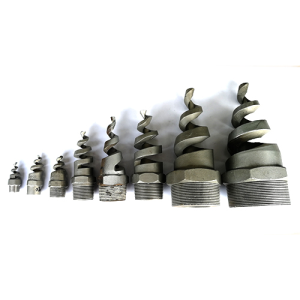Some castings have simple structure and low processing technology difficulty coefficient, which can be realized by directly applying traditional methods. However, for industries such as aerospace and aviation, the precision requirements for castings are extremely high, and the structure is cumbersome. If traditional methods are still used and human work experience is used to do it, it is very easy to cause casting defects and reduce production.Outcome rate will eventually cause economic and even safety damage.
However, in recent years, 3D printing technology has developed rapidly and has become popular, and many industries have begun to introduce such high-tech technologies. For the Dongguan precision casting industry, combining it with casting simulation software and laser powder rapid prototyping technology can complete the precise production of fine castings and improve casting productivity.

The theoretical basis for the combination of 3D printing process and Dongguan precision casting simulation technology is:
1. Import the casting blank (including the remaining amount of processing) realized by the three-dimensional design into the casting process design plan CAD, and adopt the gating system measurement, riser measurement, cold iron measurement, independent molten pool measurement, and modulus measurement;
2. Add the pouring system and riser (cold iron) to the casting blank according to the numerical size and position;
3. Import the initialized pouring system and riser information into the casting process simulation CAE, adopt the simulation simulation of the casting link, improve the pouring system and riser, and output the improved pouring information;
4. According to the three-dimensional drawing of the blank, use the HLP-500 laser powder rapid prototyping machine to directly produce the original wax castings;
5. According to the well-designed casting process plan, connect the casting system to the original wax parts and make the shell according to the design. Production of membrane shells by processing techniques such as dewaxing and high-temperature roasting;
6. Pour the metal material liquid heated to a certain temperature into the membrane shell, and then shed the shell after cooling to produce casting blanks;
7. Finally, use CNC machinery to produce the final product to realize the rationalization of the installation certification design.
Related News
- Precision casting mirror treatment and dewaxing casting
- Controlling the high quality of precision cast steel is the key
- Production Development of Guangdong Stainless Steel Casting Alloy Steel
- Characteristics of precision cast steel investment casting
- Dongguan precision casting kitchen hardware pendant varieties
- Processing steps and cleaning methods of Guangdong stainless steel castings
- Definition of Guangdong carbon steel casting
- Classification of Dongguan Precision Casting Special Casting
- Dongguan Precision Casting Factory
- What are the types of alloy steel casting hardware in Guangdong
- Briefly describe the precision castings that are closely related to us
- The good points of Dongguan precision casting
- Brief description of robot stainless steel accessories and 304 stainless steel
- The development of precision cast steel at this stage
- Solutions to Difficulties in Casting in Alloy Steel Foundry
- Compare the cutting performance strength of carbon steel and stainless steel blades
- Dongguan precision casting precision regulations and cost fees
- Do you know about sand forging?
- How to remove rust in Dongguan precision casting
- Qualified performance of robot stainless steel parts
